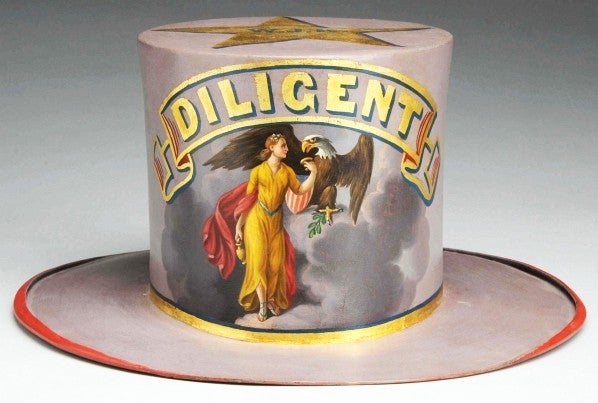
NEW YORK — Collecting firefighting memorabilia, from leather fire buckets, 1860s parade hats and early presentation trumpets to fire nozzles, badges and lanterns, not only evokes nostalgia but also documents the legacy of fire service from its earliest days. Firefighters have long been revered by their communities for their bravery. After mutual aid societies and volunteer firemen companies were formed, parades honoring fire departments became common. Today, artifacts associated with firemen’s parades, as well as firefighters’ everyday tools of the trade, are a coveted specialty interest within the overall category of Americana.
New York City is credited with creating the American colonies’ first firefighting department in the 1600s, back when New York was a Dutch colony. “Fighting fires required a lot of manpower, from the initial bucket brigades to the organized volunteer companies,” says a commentary on the website of the New York City Fire Museum. More than 10,000 artifacts in the museum’s permanent collection are eyewitnesses to the evolution of firefighting. from the bucket brigades of Peter Stuyvesant’s New Amsterdam to today’s modern firefighting units.
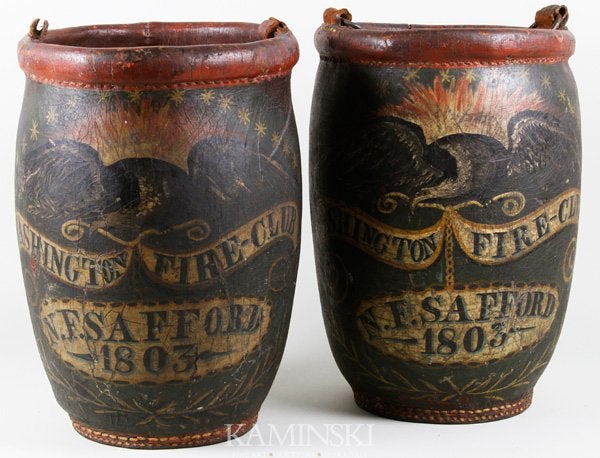
Before fire engines became commonplace in New York and other big cities, members of the public were called on to assist in fighting fires by becoming part of a bucket brigade. Quite literally, buckets of water were handed from person to person until they reached the douser at the end of the line. Steam engines and fire pumpers, which came later, revolutionized the firefighting process.
Museums dedicated to firefighting are located all over the world and typically tell the story of their local fire departments. Often the museums are sited in old firehouses. The Boston Fire Museum has a number of historical artifacts, including a circa-1900 Gamewell fire box that served the neighborhood of Hyde Park. The Cincinnati Fire Museum has the original giant drum that the city bought in 1808 to serve as a fire alarm for the local citizenry. The collection maintained by the Fire Museum of Memphis includes a fascinating variety of fire helmets from around the country.
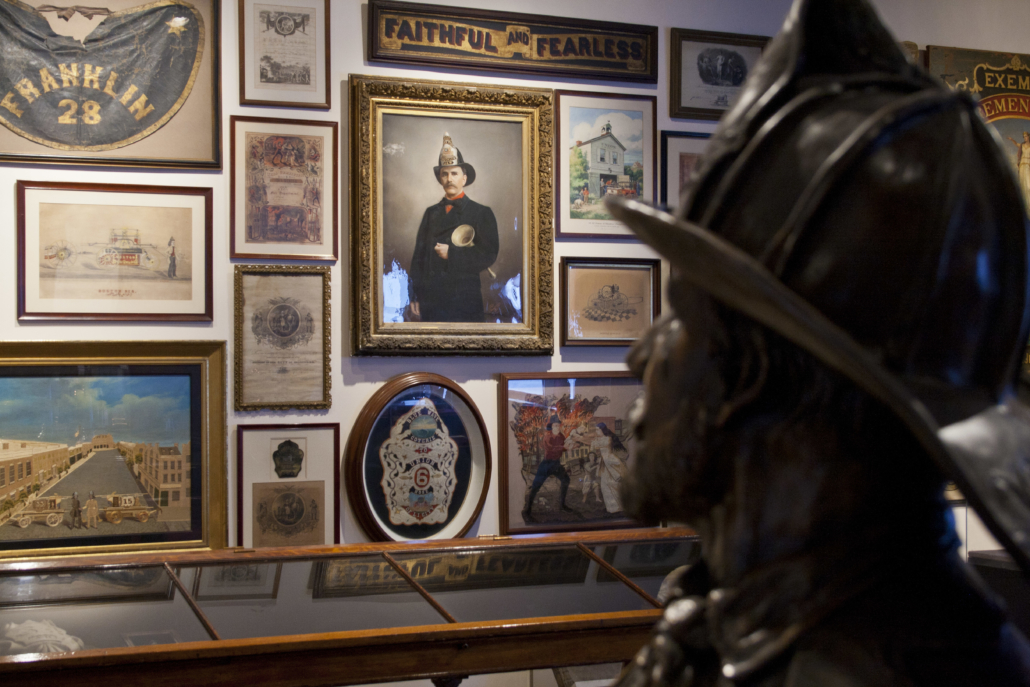
There are many private collectors of early firefighting memorabilia, and auction prices often reach the low five figures for scarce items, such as a rare six-sided wrist lantern with leveled red and blue panels cut to clear, inscribed “Empire Hose Co. 1, Flushing, NY,” which sold for $28,000 at Morphy Auctions in August 2018. A white leather fire helmet having a rare 60-comb design and a serpent finial made $10,000 in October 2012 at Showtime Auction Services.
Even full-size fire trucks show up at auction, and there’s never a shortage of bidders. A historical example, an early 1800s Thayer hand tub with ties to Paul Revere’s legacy at the Boston Fire Department, achieved $100,000, also in October 2012 at Showtime Auction Services.
The largest personal collection of firefighting items donated to the New York State Library was the Dr. Thomas S. Walsh, Jr. Firefighting Collection. A 50-year accumulation, it includes books, ephemera, broadsides, photographs, equipment catalogues and more.
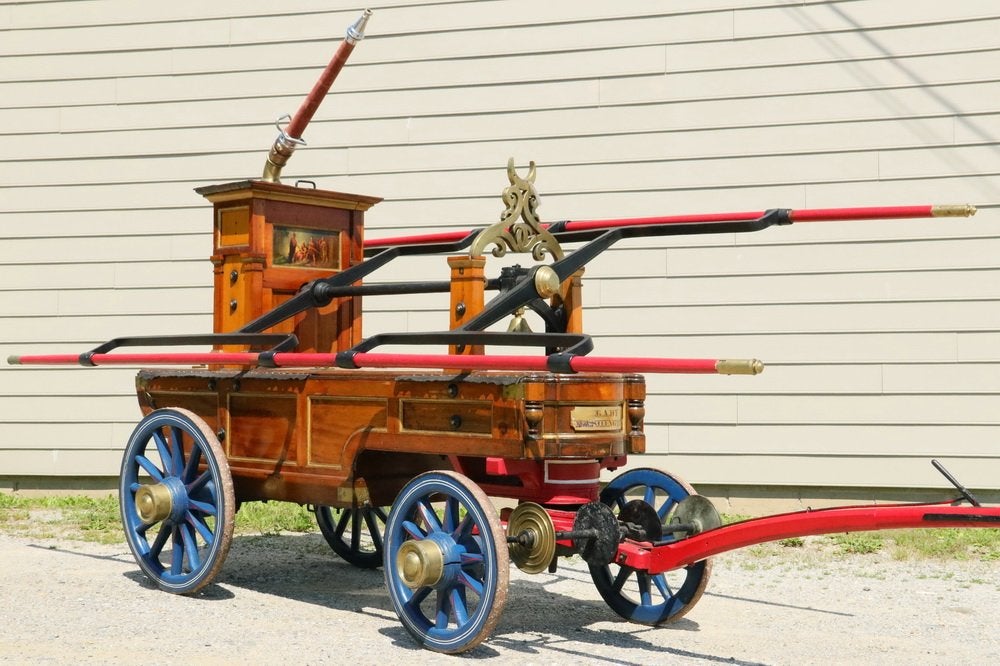
After retiring from over 40 years of active service with a volunteer fire department, during which time he avidly collected fire memorabilia, Pat Holohan of Kankakee, Illinois, began a collecting website and two Facebook groups, “Old Fire Stuff For Sale” and “Old Fire Stuff Fire Barn.”
“I consider the older leather high-eagle fire helmets and presentation trumpets to be the most collectible today,” said Holohan, adding that collectors can usually trace provenance of these items back to the original owners. Helmets and trumpets from the 1800s are especially popular. The helmets can be traced by the shields or front pieces, which help identify the fire department itself, the rank of its wearer, and what their duties were (e.g., fireman, officer, ladderman, engineer, etc). Additional written information is often found inside the brims or headbands. Eagles were added to the helmets as ornamentation in the early 1800s. While some departments had all their firefighters wear helmets of the same color, in most cases color signified different ranks, with black helmets worn by basic firefighters and white helmets worn by chiefs.
Collectors of trumpets are interested in both working and presentation trumpets, Holohan said. “The working ones were used in the field to yell the chief’s or incident officer commands out. Sometimes these were engraved and given out upon retirement.” Presentation trumpets were engraved and also presented upon retirement or for other special occasions, such as competition events between local fire groups, he said. “These were usually purchased from jewelers or fire equipment distributors and were highly engraved. The value of these comes from the history that can be traced through the information on them.”
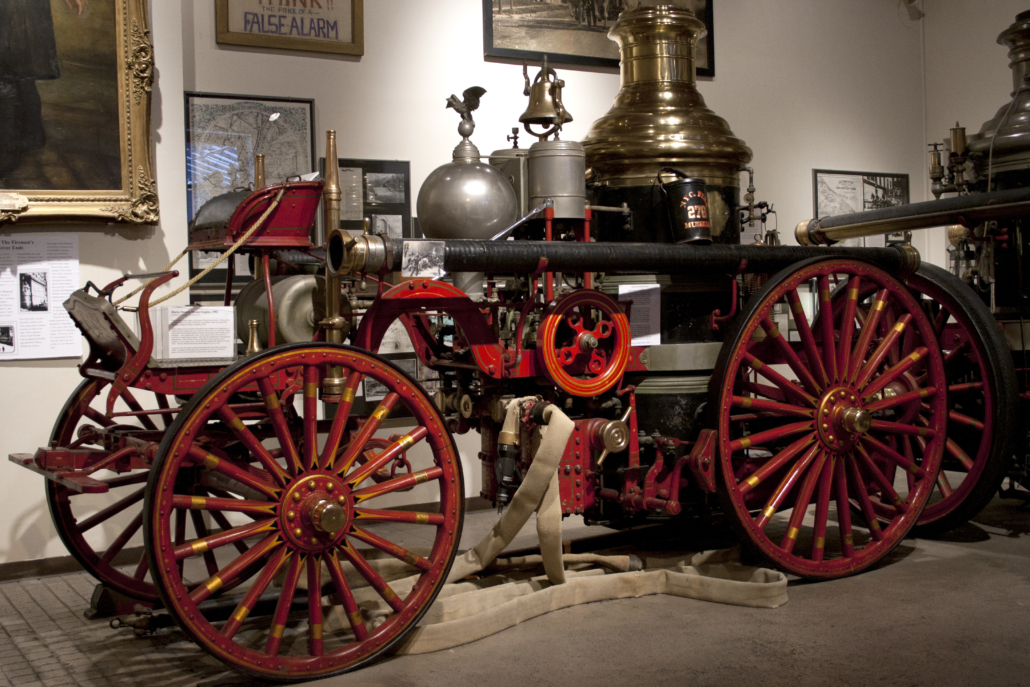
Collectors have many reasons for acquiring firefighting memorabilia. Perhaps a family member served in the fire department or they just find these items fascinating. Many collectors seek out items where they have a personal connection, such as the city where they live; while others look for items from a particular era. No matter what the motivation might be, expect competition for the rare and early examples. There’s a “hot” market for them.
# # #

